Exploring the GameCube Controller: Design and Legacy
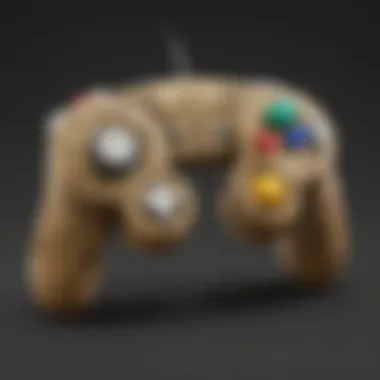
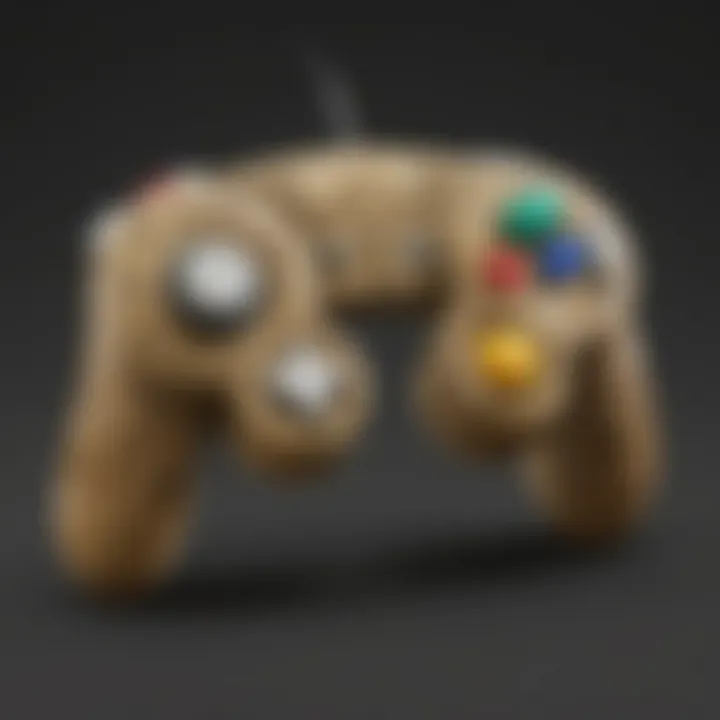
Intro
The official GameCube controller is more than just a hunk of plastic with buttons; it’s a key that has opened doors to countless adventures. As a part of Nintendo’s iconic gaming lineup, this controller didn’t merely serve functional purposes; it went above and beyond by becoming a log in the cultural fire of gaming lore. When dive into the essence of the GameCube controller, a multitude of elements come to light—design ingenuity, gameplay engagement, and most importantly, its legacy that still resonates with gamers today.
In this analysis, we’ll journey through the distinct features that set the controller apart, assess its impact on gaming history, and explore its relevance in the wider context of the Nintendo universe, particularly within the beloved Zelda franchise. Whether you're a seasoned player reminiscing about twilight hours spent battling in Hyrule, or a newcomer looking to understand the roots of modern controllers, there is something to grasp in the narrative of the GameCube controller.
By the end of this exploration, readers will have gained a clearer picture of just how this device molded the styles and preferences of gamers, reflecting on its enduring appeal to both casual enthusiasts and hardcore followers alike.
Preface to the GameCube Controller
The GameCube controller holds a special place in the hearts of gamers, serving not only as a tool for gameplay but as a cultural artifact that speaks to the evolution of gaming experience. Its unique design, coupled with its role in the Nintendo franchise, makes it a focal point for understanding not just the GameCube’s legacy, but also the broader landscape of gaming controllers. In this article, we will explore various aspects of the GameCube controller, dissecting its features, historical impact, and legacy within the gaming community, especially for fans of iconic franchises such as Zelda.
Historical Context
When the GameCube launched in 2001, it came at a time when video gaming was attracting a wider audience. The industry had already witnessed the rise of 3D graphics and the introduction of analogue sticks. However, the GameCube controller aimed to create a comfortable and intuitive gaming experience that appealed to both hardcore and casual gamers alike.
The late 1990s and early 2000s were pivotal due to the emergence of 3D games, demanding innovative controller designs that could keep pace with more complex gameplay mechanics. The GameCube controller was designed amidst competing offerings from brands like Sony and Microsoft, which were becoming increasingly popular. Notable is the fact that it drew lessons from past controllers—seeking to refine and enhance user experience without losing the charm of gaming simplicity.
The Genesis of Design
The design of the GameCube controller was a balance of comfort, style, and functionality. Nintendo’s aim was not just to make a controller but to craft a device that encouraged fair play and engagement. The compact, ergonomic shape of the GameCube controller was an intentional decision, allowing for ease of use over long gaming sessions.
Here are some distinctive elements that played a role in the design process:
- Colorful Aesthetics: With options like indigo, black, and platinum, the controller didn’t shy away from being a visual statement.
- Octagonal Gate Design: The thumb stick featured an octagonal restriction, aiding in precise directional input, especially for games that demanded accurate movement.
- Button Placement: Each button and trigger was intentionally placed to enhance reachability and facilitate quick reactions, merging with the unique button configuration for diverse gameplay.
The GameCube controller was not just about functionality; it was about creating a connection between the player and the game. As we dive deeper into its technical specifications and impact, we'll see how these design choices influenced countless gaming experiences.
"The GameCube controller was more than an accessory; it served as a bridge between the player and the virtual world."
By gaining insight into its historical significance and design genesis, we begin to understand why the GameCube controller remains a beloved tool in gaming history and a vital piece of nostalgia for many enthusiasts.
Design Features
The design features of the GameCube controller are what truly set it apart in the realm of gaming accessories. They encapsulate not only how players interact with their games but also how the experience is shaped through tactile feedback and intuitive controls. Each element of the design has been meticulously thought out to enhance gameplay, making it essential to delve into the specifics of these features.
Physical Layout
The physical layout of the GameCube controller is noteworthy for its unique composition, a mix of familiar and innovative placements. Unlike traditional controllers that opted for symmetrical designs, the GameCube’s asymmetric layout allows for a more agile grip. The prominent thumbstick is positioned in a way that encourages one-handed control, which is particularly beneficial when rapid movements are necessary.
There’s also the ‘C’ stick, which offers a second joystick experience, placed conveniently for easy access. This complements the primary analog stick for games that require multi-directional inputs simultaneously. The button placement follows a layout tailored to comfort and reflex; for instance, the action buttons are distinctly arranged, making them intuitive to reach. In practice, when players engage in fast-paced action, the ease of switching between the buttons without losing grip is a significant advantage.
Ergonomics and Comfort
Ergonomics play a pivotal role in the controller’s design. The GameCube controller was designed with the average hand size in mind, allowing for prolonged gameplay without causing discomfort. The curved shape fits nicely against the palms, preventing finger fatigue even during those marathon gaming sessions.
This thoughtful design extends to the grip texture as well, which adds an additional layer of comfort. The rubberized grip feels natural during use, prompting players to fully immerse themselves into the gameplay without the distraction of discomfort.
A crucial aspect of ergonomic design is how it influences overall performance in a game. The layout encourages a natural resting position for fingers which can lead to quicker reaction times. Casual or competitive, nobody wants their controller to be a limiting factor.
Button Configuration
When it comes to button configuration, the GameCube controller shines through its intentional design. Each button on the controller is uniquely shaped and placed, offering visual and tactile differentiation that helps users quickly identify them. The A button, leading the pack, is noticeably larger, marking it as the primary action button, while the B button is slightly smaller, creating an easy-to-navigate setup.
The L and R triggers provide a responsive feel, crucial for racing games or quick in-game actions. They are designed with a gradual press mechanism, allowing players to gauge their actions in a nuanced way. This feature is especially appreciated in pivotal moments during gameplay, as players can execute actions with precision.
Moreover, the Z button, although placed less conventionally, serves its purpose well — it allows for additional controls without crowding the main interface.
In summary, the button configuration is not merely a collection of isolated components; it transforms interaction into a fluid and engaging experience, integral to the overarching design philosophy of the GameCube controller.
"A great controller is the bridge between the player and the experience, and the GameCube controller embodies this philosophy in its design features."
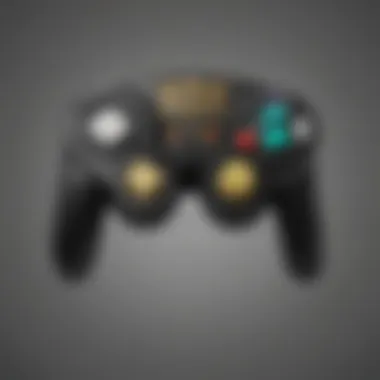
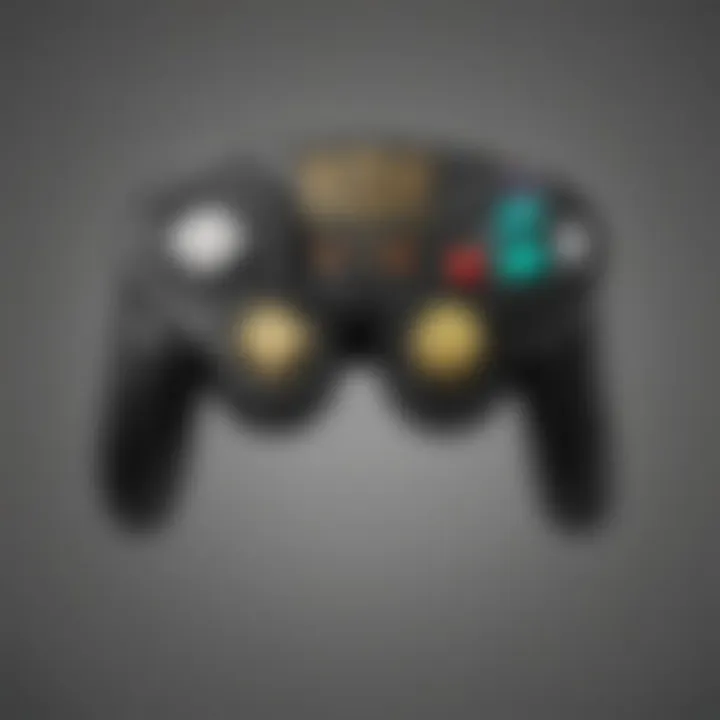
Technical Specifications
In exploring the GameCube controller, the technical specifications cannot be overlooked. They represent the backbone of how the controller functions, impacting everything from gameplay experience to longevity. Specifications like connectivity options and durability are crucial, particularly for a platform associated with both casual and competitive gaming. So, let’s break down these aspects, ensuring you have a clear understanding of why they matter.
Connectivity Options
When you look into the connectivity options, the GameCube controller presents an interesting scenario. Initially, it featured a proprietary connector designed specifically for the GameCube console. This uniqueness provided a solid and reliable connection, eliminating common disconnections found with other controllers that utilized wider protocols. The simplicity of connecting the controller directly into the console ensured that players could jump right into action without dealing with interference or additional setup.
Moreover, the wireless connectivity option introduced later expanded its reach. The WaveBird controller, for instance, allowed players the freedom to move without cables tethering them to the console. Although wireless, it maintained low latency, which is vital for competitive play – just ask anyone who’s gone head-to-head in Super Smash Bros. Melee. A few feet from the screen can mean a world of difference in reaction time.
In modern terms, USB adapters have made it possible to use the GameCube controller on contemporary consoles and PCs, keeping it relevant even years after its original release. This adaptability is essential in today’s gaming landscape, where cross-platform functionality is highly sought after.
Durability and Build Quality
Next up is the durability and build quality of the GameCube controller. Simply put, it was built to last. The materials used were strong enough to withstand the rigors of frequent gaming sessions. Features like the rubberized grips not only provided comfort but offered excellent traction, ensuring that during those heated moments in a game, the controller wouldn’t slip from your hands.
Players often recall the feel of the buttons, which were designed with responsiveness in mind. Each button had a satisfying click that many gaming enthusiasts love, steering clear of any mushiness that’s found in lesser-quality controllers. Many gamers hold onto their controllers for years, and it’s not uncommon to find GameCube controllers still perfectly functional, demonstrating the impressive longevity of the build quality.
"The GameCube controller isn’t just a piece of hardware; it’s a testament to thoughtful design and robust engineering that has stood the test of time."
Gamecube Controller's Impact on Gaming
The GameCube controller stands as a pivotal element in the evolution of gaming. Not only did it influence the design of future controllers, but it also helped shape the way players interact with games. Its significance transcends mere aesthetics; it touches on how game mechanics are experienced by players. Several key aspects contribute to the GameCube controller’s noble legacy in gaming.
Influence on Game Design
When developers sat down to create games for the GameCube, the controller was an essential consideration. The controller's distinct button layout and analog stick positioning led to innovative gameplay mechanics. For instance, the inclusion of the large A button made actions like jumping and shooting intuitively accessible, effectively enhancing the level of engagement.
In titles like Super Smash Bros. Melee, the controller's design facilitated precise inputs. The rapid responsiveness encouraged combo execution and intricate maneuvers, paving the way for a genre that thrives on dexterous control. Ultimately, the GameCube controller enabled developers to think outside the box regarding game mechanics that depended heavily on player dexterity. This is a direct effect of how the controller's design fostered creativity among designers:
- Accessibility: The large buttons make it easier for new players to engage without steep learning curves.
- Precision: The analog sticks and their distinct click provided notable accuracy in analog control.
- User Experience: The tactile feedback and overall ergonomics enhanced immersion, pushing game design to focus more on player-centric mechanics.
Competitive Gaming and eSports
As gaming grew into a cultural phenomenon, the competitive scene gained traction, and the GameCube controller played a significant role. Titles like Super Smash Bros. Melee became cornerstones of eSports, creating a community that thrived on competition. Players turned to this controller not just for its comfort but for its competitive edge.
The precise control that the controller provided became a staple in competitive gaming. Players found a rhythm with the layout, allowing for seamless execution of complex moves. In tournaments held across the globe, the GameCube controller became synonymous with skill, and its loyal fanbase often dubbed it as the best controller in the fight scene.
Several factors contributed to this success:
- Familiarity: Gamers developed a comfort level that translated into success during high-pressure situations.
- Customization: Many competitive players began to mod or customize controllers, focusing on aspects like button sensitivity. This fostered innovation in how players approached competition.
- Community Aspect: The GameCube community encouraged shared experiences, mentorship, and strategies, all revolving around this specific controller's feel and responsiveness.
The GameCube controller did not just impact the devices themselves but also shaped the very landscape of competitive gaming, creating lasting legacies that endure in tournaments today.
Comparison with Other Controllers
Understanding how the GameCube controller stacks up against other gaming controllers is essential for appreciating its unique place in gaming history. This comparison isn’t just about technical specifications; it also dives into user experience, game design adaptations, and how different controllers serve various gaming styles:
PlayStation and Xbox Controllers
When you put the GameCube controller next to the PlayStation and Xbox controllers, a few things stand out immediately. While the GameCube controller boasts a distinctive asymmetrical button layout and a prominent thumbstick, PlayStation controllers focus on symmetry with their dual-stick setup. For example, the PlayStation's DualShock series emphasizes grip and the tactile feedback from dual analog sticks.
In contrast, players often find the GameCube controller's button placement more intuitive for certain games, namely due to its triggers and their responsiveness. The contrasting layouts can lead to very different gameplay experiences.
One of the significant advantages of the Xbox controller is its robust size and durability, making it a favorite among players who prefer a heftier device. However, many gamers argue it’s easy to feel fatiguing during extended periods. On the other hand, the GameCube controller is often lauded for its lighter weight and ergonomic shape, which can lead to less hand fatigue, especially for long sessions of gameplay.
Here’s a side-by-side comparison to highlight some key differences:
- Size: GameCube controller is smaller, making it easier for younger players.
- Button layout: GameCube’s oversized A button stands out among rival designs.
- Feedback: Xbox controllers have more robust feedback, but GameCube's simplicity is often preferred for precision.
Ultimately, preference comes down to personal taste, and each controller has its specific advantages and drawbacks.
Legacy Systems and Their Controllers
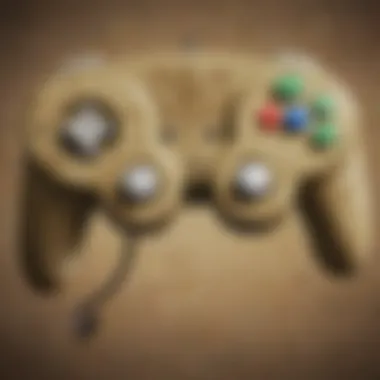
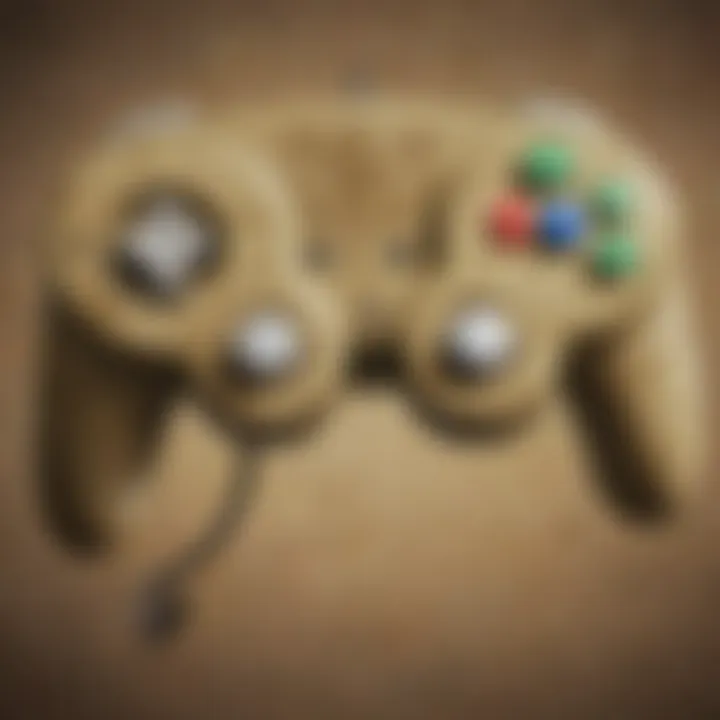
When you look back at legacy systems like the Super Nintendo or the Sega Genesis, it’s fascinating to see how controller designs have evolved over the decades. The GameCube controller, for instance, inherited certain design elements and innovations from these earlier systems while also introducing new concepts.
The Super Nintendo controller is often considered simple yet effective, but the GameCube controller took that simplicity and wrapped it in a more user-friendly, versatile design. Notably, the addition of an analog stick revolutionized how players interacted with 3D environments, laying a critical foundation for future designs.
Here are some noteworthy contrasts with legacy systems:
- Analog Sticks: Introduced in the GameCube era, they are now standard. Previous controllers like the Sega Genesis relied only on a d-pad.
- Button Variety: The GameCube controller offers a wide variety of button configurations, surpassing those early controllers that typically had just six buttons.
- Gaming Genres: The GameCube controller's design catered to a broader range of genres, whereas legacy controllers often focused primarily on 2D gameplay.
"Controllers shape not only how games are played but also how we experience them. The GameCube controller’s innovations were pivotal in this evolution."
In essence, the legacy of the GameCube controller rests not just in its immediate impact but also in how it paved the way for future designs, merging comfort, style, and functionality in a way that reshaped gaming. Understanding these comparisons allows us to appreciate the GameCube controller for what it truly represents in the broader context of gaming history.
Cultural Relevance
The significance of the GameCube controller transcends mere functionality. It represents a cultural artifact that connects gamers across generations. Specifically, its design and performance have cemented it as a key player in the gaming landscape. This controller is not just a tool; it's a symbol of nostalgia, contributing to the rich tapestry of gaming culture.
Fandom and Collectibility
The GameCube controller has sparked a thriving community of fans and collectors. Many enthusiasts hunt down original controllers, often seeking those in pristine condition. Features like distinct color variants and limited editions make them particularly intriguing in the eyes of collectors. For instance, the purple controller, with its translucent housing, stands out as a fan favorite, embodying the vibrant aesthetic of the GameCube era.
In addition, online forums and social media platforms, such as Reddit and Facebook, have become bustling hubs where collectors exchange tips, share their finds, and discuss the history of the controller. This communal aspect reinforces the fervor surrounding the GameCube controller, as fans gather to celebrate their shared love for gaming history. The emotional attachments formed around these collectibles often lead to higher values in the market, as scarcity and demand drive prices up.
Representation in Popular Media
The representation of the GameCube controller in popular media is another fascinating aspect of its cultural relevance. It permeates various areas—from documentaries that explore the evolution of gaming to YouTube channels dedicated to retro gaming. The controller has made appearances in numerous gaming videos and retrospectives, often viewed as a nostalgic piece that symbolizes a pivotal moment in gaming history.
Moreover, the controller’s design and features have inspired various forms of merchandise, like themed apparel and collectibles. For instance, you might come across T-shirts emblazoned with the GameCube controller's distinctive button layout, allowing fans to wear their passion on their sleeves, quite literally. This continual presence in popular culture keeps the GameCube and its controller alive in the hearts of gamers, reaffirming their status as icons of a bygone yet impactful era.
The GameCube controller is not just a piece of hardware; it’s a key that unlocks a shared passion among gamers, echoing the nostalgia of countless gaming sessions.
In summary, exploring the cultural relevance of the GameCube controller reveals a confluence of history, community, and collective memory that has resonated with fans over the years. As the gaming landscape continues to evolve, the legacy of this controller remains firmly rooted in the hearts of those who grew up with it.
Controller Innovations
The landscape of gaming has been significantly transformed over the years, owing much of its evolution to the innovations in controller technology. This section sheds light on Cristal clear advancements that the GameCube controller brought to the table, emphasizing how these features not only enhanced gameplay but also paved the way for subsequent designs in the gaming industry. The importance of this topic lies in its exploration of crucial elements, benefits, and considerations that shaped the controller as we know it today.
Technological Advances in Game Controllers
When discussing the technological leaps made by the GameCube controller, several key features stand out. One of the earliest advancements was the introduction of analog triggers, which were not commonplace in earlier models. These triggers provided players with variable input sensitivity, allowing for smoother acceleration and braking in racing games, for example. The feel of the controller during pivotal moments in gameplay was fundamentally redefined, crafting a more immersive experience.
Moreover, the incorporation of the C-stick was quite revolutionary. This small analog stick allowed players to perform intricate camera movements without relying solely on button combinations. The benefits here were twofold — it simplified gameplay and enhanced control, particularly in action-adventure titles like The Legend of Zelda: The Wind Waker. The tactile design, coupled with the friction material used on the sticks, allowed for precision that wasn't easily matched by its contemporaries.
It’s also worth noting that, while many controllers prior had significant wired connections, the GameCube controller introduced a more versatile connectivity model. The option to connect to the console wirelessly through an adapter was groundbreaking at its time, increasing comfort and flexibility for players engaged in lengthy gaming sessions. Such efforts toward better ergonomics showcased a genuine consideration for the player’s well-being.
Future Trends in Gamestyle Controllers
Looking ahead, the future of game controllers is as intriguing as it is promising. Innovations are expected to delve deeper into customization and user preferences. Modern gamers are likely to seek controllers that not only feel comfortable but also provide personalized functionality. One trend that seems to be gaining traction is adaptive controllers, which can cater to various play styles and physical abilities. In that spirit, the GameCube’s legacy lives on — it proved that a controller could complement diverse gaming experiences.
In addition, the rise of haptic feedback technology hints at another layer of immersion. Gamers can anticipate controllers that can mimic the sensation of in-game events, further bridging the gap between reality and the virtual world. The nuanced feedback could revolutionize how players engage with their games, transforming simplistic button presses into dynamic experiences that respond to the gameplay environment.
Lastly, with the increasing popularity of cloud gaming, controllers may have to adapt to an array of devices while maintaining a high level of performance. The adaptability seen in past innovations will be crucial in creating controllers that meet the needs of gamers who traverse multiple platforms seamlessly.
"The evolution of game controllers is a testament to the gaming industry's commitment to enhancing player experience through innovation."
The GameCube Controller in the Zelda Universe
When discussing the intricate connections between gaming peripherals and iconic titles, the relationship between the GameCube controller and the Zelda series stands out. The unique design of the controller coincided perfectly with the creative demands of these games, resulting in a user experience that was both engaging and intuitive. The GameCube controller didn’t just facilitate gameplay; it enhanced the way players interacted with the worlds crafted by Nintendo.
Zelda Titles Utilizing the GameCube Controller
The GameCube was the home to several critically acclaimed games in the Zelda franchise, most notably The Legend of Zelda: The Wind Waker and its follow-up remake, The Legend of Zelda: HD. Each of these titles utilized the distinctive features of the GameCube controller to immerse players in their sprawling adventures.
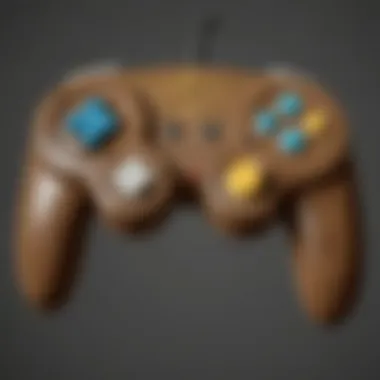
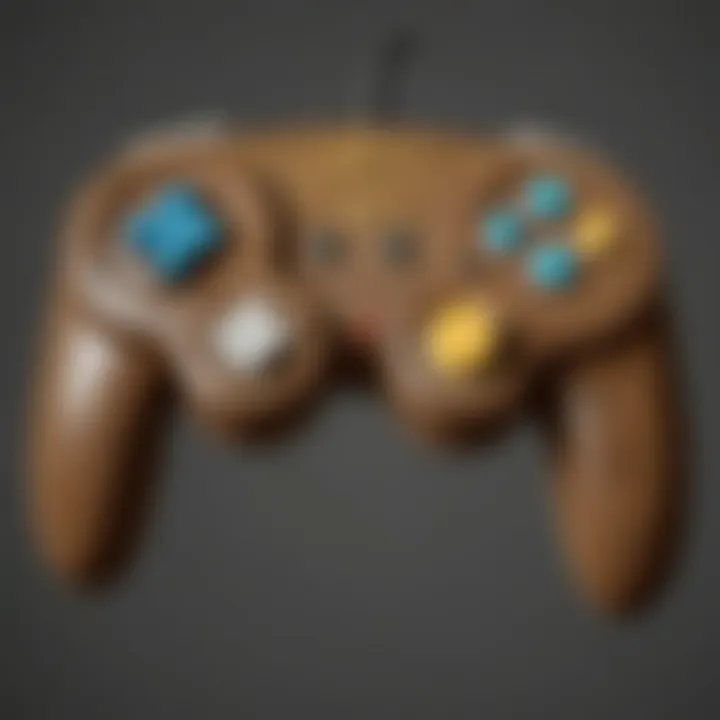
- The Wind Waker employed the controller's ergonomic layout to create a fluid sailing experience. Players would use the joystick to navigate vast oceans, while the layout of buttons allowed for quick access to weapons and items. Afterward, Twilight Princess pushed further, embracing the controller's precise aiming capability, which brought bow-and-arrow mechanics to life.
Moreover, the tactile feedback provided by the controller's buttons allowed for responsive combat and puzzle-solving elements unique to these Zelda games. Using the A and B buttons felt natural when executing sword strikes or triggering special abilities, making the controller an extension of the player’s will. Notably, The Wind Waker’s emphasis on exploration was significantly aided by the multi-functionality of the C-stick, enabling peerless camera control and navigation — something that older titles in the series struggled with.
The richness of these experiences reveals just how thoughtfully designed the GameCube controller was, syncing seamlessly with the dreams of Hyrule’s many realms.
Player Experience and Feedback
Player feedback on their experiences with the GameCube controller in the Zelda universe is a blend of nostalgia and appreciation. Many longtime fans echo a fondness for the ergonomics the controller introduced. It was built for comfort, allowing long gaming sessions sailing across the Great Sea or traversing the vast landscapes of Hyrule without discomfort.
Here are some recurring sentiments shared by players:
- Intuitive Layout: Many players found the button placement to be logical, reinforcing muscle memory. This ease of adaptation made it accessible not just to experienced gamers but also to newcomers grappling with the complexities of the series.
- Enhanced Immersion: The ability to quickly switch tools or weapons in-game was a game-changer. Tasks that once required unnecessary pawing over buttons now took mere seconds. This streamlined process allowed players to stay immersed in gameplay rather than fumbling with controls.
However, some players did criticize its somewhat awkward placement of the L trigger, which sometimes made certain actions like shield blocking feel uncomfortable. Such insights contribute to a nuanced understanding of the controller's legacy within the franchise.
In the end, the GameCube controller did more than just serve its purpose; it became an integral part of the player’s journey through some of Zelda's most memorable adventures. The feedback from players emphasizes how it shaped not only gameplay but also their connection to the beloved franchise.
Controller Adaptations and Modifications
In the ever-evolving world of video games, controllers often stand out as crucial instruments that help players navigate virtual realms. The GameCube controller, with its unique features and ergonomic design, has not only held its ground over time but has also inspired countless adaptations and modifications. These adaptations allow users to tailor their gaming experience to better fit their preferences, creating a more immersive environment. This section will take a closer look at the significance of controller adaptations and modifications, touching on aftermarket extensions and customization options that enrich gameplay.
Aftermarket Extensions
Aftermarket extensions play a vital role in enhancing the functionality of the GameCube controller. These enhancements improve performance, add new capabilities, and often cater to personal preferences. For instance, many players have sought third-party adapters that allow the GameCube controller to connect to modern consoles like the Nintendo Switch. These adapters bridge the gap between old and new, enabling gamers to use their beloved controllers across a broader range of games and platforms.
Some of the standout aftermarket products include:
- Wireless Adapters: These allow the GameCube controller to function wirelessly, eliminating that pesky cable drag that can hinder movement during intense gaming sessions.
- Enhanced Pulse Packs: These modifications add haptic feedback to the GameCube controller, giving players a more tactile feel when navigating through interactive environments.
- Customizable Joysticks: Players can replace original joysticks with options that offer different levels of sensitivity and grip, tailoring the feedback to their personal style.
By utilizing aftermarket extensions, gamers can not only prolong the life of their GameCube controllers but also enjoy an experience that resonates with their individual gaming styles. However, adopting these extensions does come with caveats. Compatibility issues, firmware updates, and potential voiding of warranties are important considerations for any serious gamer looking to enhance their setup.
Customization Options
Customization options represent another arena where players can significantly influence their gaming experiences with the GameCube controller. These modifications range from aesthetic changes to functional upgrades, allowing users to create a controller that is genuinely their own.
Some popular customization avenues include:
- Custom Faceplates: Players can swap out original plates for ones that showcase their favorite colors, themes, or images. This personalization brings an individual touch and fosters a stronger connection between the player and their setup.
- Button Mapping: With specialized software, enthusiasts can remap buttons on the controller to suit their gameplay needs. For instance, in action-oriented games, swapping the layout for easier access to critical functions can change the way a game is played.
- Grip Enhancements: Adding custom grips to the handles can significantly improve comfort and reduce slip during long gaming sessions, making gameplay more enjoyable.
In addition to purely aesthetic changes, many players are finding joy in the process of redesigning their controllers. This hands-on approach not only enhances functionality but also fosters a sense of community among gamers. DIY projects can lead to lively discussions on forums like Reddit, where players share their tweaks and inspire others.
To summarize, the evolution of the GameCube controller through adaptations and modifications has significantly enriched the gaming experience. The aftermarket extensions and customization options expand beyond mere necessity, tapping into the realm of creativity and personal expression. As players engage more deeply with their controllers, they not only enhance their gameplay but also contribute to the legacy of the GameCube controller in genres like Zelda, ensuring it remains a beloved tool for gamers well into the future.
Culmination
The conclusion serves as the capstone of our exploration of the GameCube controller, underscoring its multifaceted significance not just as a mere accessory but as a cornerstone of gaming culture during its era. Beyond the primary functionalities and aesthetic design that initially drew players in, the controller symbolizes a bridge between gaming nostalgia and contemporary gaming experiences. This final section seeks to recapitulate key themes discussed throughout the article, providing a coherent narrative that encapsulates the controller's legacy.
Summarizing the GameCube Controller's Journey
To understand the true impact of the GameCube controller, one must reflect on the arc of its journey since inception. Launched alongside the Nintendo GameCube, it immediately set a precedent with its distinct layout and button configuration. Players quickly recognized the importance of its ergonomic design, tailored for comfort during long gaming sessions.
- The circular thumb stick, unique at the time, provided an innovative approach that influenced the very way games were interacted with.
- Additionally, the inclusion of the triggers and digital pads added layers of control, giving rise to a new style of gameplay that became a hallmark for future controller designs.
The GameCube controller did not merely blend into the background; it became a staple in notable game franchises, particularly within the Zelda universe. Titles like The Legend of Zelda: The Wind Waker and The Legend of Zelda: Twilight Princess were enhanced by the nuanced controls, allowing for immersive gameplay experiences.
Furthermore, it has transcended generations, finding itself integrated into competitive gaming scenes, and creating a lasting legacy that resonates with both gamers old and new.
Looking Ahead: The Future of Game Controllers
As we glance toward the horizon of gaming technology, it's difficult to overlook the profound influence that the GameCube controller continues to exert. As gaming evolves with cutting-edge virtual reality and augmented reality systems, one can be assured that the philosophies of ergonomic design and function, championed by the GameCube, will remain foundational.
Future gaming controllers will likely draw inspiration from the efficiency of the GameCube's layout. As trends lean towards more adaptive and customizable controllers, the essence of the GameCube will linger.
- The significance of haptic feedback and motion controls, which have grown in sophistication over the years, are crucial considerations. Players will be on the lookout for controllers that not only feel good but also enhance gameplay immersion in ways previously thought impossible.
- Moreover, with the rise of eSports and competitive gaming, there's a strong possibility of a return to simpler, more intuitive designs that the GameCube controller embodied.
Incorporating a balance of nostalgia and modern technology can be the key to designing the next generation of gaming controllers. The legacy of the GameCube controller reminds us to prioritize user experience and comfort, as these aspects are what truly enhance gameplay and engage players, old and young.
With an eye on innovation and a heart in tradition, the future of game controllers looks promising, channeling the spirit of the GameCube while pushing the boundaries of what is possible.


Unraveling the Mystique of the Indigos: Exploring Significance, Characteristics, and Cultural Impact





